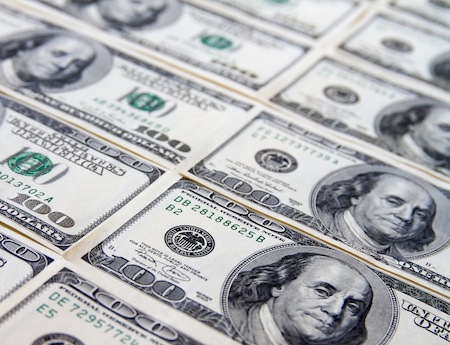Political Ad Spending to Hit $11.4B in 2016

Political advertising is expected to reach a record $11.4 billion in 2016, up 20% from the previous presidential election year, according to a new report from Borrell Associates.
While the bulk of the spending will continue to go to TV, Borrell expects 2016 to be the first election year in which spending on digital advertising tops $1 billion.
Adding in 2015 spending, Borrell figures that political advertising in this election cycle will total $16.5 billion.
About half the total spending will back the national election, while the other half is on behalf of candidates and issues in local races.
During the 2015-16 election cycle $8.5 billion is expected to be spent on broadcast TV, with $5.5 billion coming from national races and $3.1 billion spent on state and local contests. Cable TV will see $1.5 billion in spending, with $737.8 million coming from national contest and $729.2 million going for local races. Online and digital spending will total. $1.1 billion, with $664.8 million going for national races and $423.8 million spent on local contests.
Borrell calculates that presidential candidates will spend about $120.8 million each. Candidates for the U.S. Senate will be spending $7.3 million each. Those looking to be congressmen will be spending $1.6 million on average.
On the local level, candidates for governor will be spending $2.6 million to run for office while state legislators will be spending close to $1 million.
Broadcasting & Cable Newsletter
The smarter way to stay on top of broadcasting and cable industry. Sign up below
Spending will be concentrated on some key states. Large states including California and Texas will see ad spending of $1.2 billion and $896 million, respectively. State with races for the U.S. Senate and other key posts will also see a spending boost, including Florida at $800 million, Virginia at $459 million and Colorado at $295 million.
Borrell also looks beyond 2016 in its new report, and TV’s political gravy train may begin to slow down. “The boisterous political carousel that’s just cranking up now will come to an abrupt halt in November 2016, and the embryonic stage of the next political cycle will begin. It will not exactly mirror its predecessors. It might even take a dramatic turn if massive negative TV commercials enrage the electorate enough that votes could be gained by using campaign funds for sources other than advertising. But how likely is that,” the report asks.
“More likely, deep analysis will be given to the mix of radio, TV, direct mail, outdoor and digital advertising, and further adjustments will be made in the next cycle. Broadcast or the Big 4 TV network channels now appeal to a much narrower slice of the electorate − older adults. Broadcast TV is likely to continue to lose political ad share and perhaps even show, for the first time since the birth of television, a decline in political advertising dollars.”
Borrell sees $12.6 billion being spent in the 2020 election, with $4.7 billion going to broadcast TV and $1.3 billion going to cable. Online spending will jump to $3.3 billion in this scenario.
(Photo via Ervins Strauhmanis's Flickr. Image taken on Sept. 19, 2014 and used per Creative Commons 2.0 license. The photo was cropped to fit 3x4 aspect ratio.)
Jon has been business editor of Broadcasting+Cable since 2010. He focuses on revenue-generating activities, including advertising and distribution, as well as executive intrigue and merger and acquisition activity. Just about any story is fair game, if a dollar sign can make its way into the article. Before B+C, Jon covered the industry for TVWeek, Cable World, Electronic Media, Advertising Age and The New York Post. A native New Yorker, Jon is hiding in plain sight in the suburbs of Chicago.

